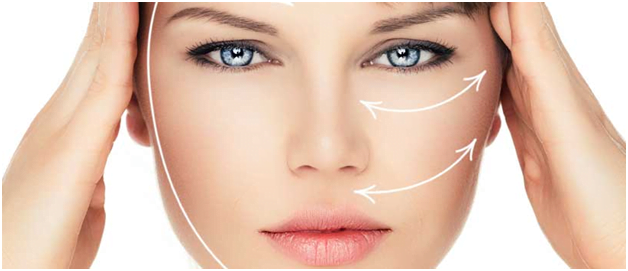Why choose plastic surgery

A facelift is addressed to those patients who feel that the improved impact of the face features does not reflect your young spirit and the actual energy state. Generally, the facelift is a very versatile process. Procedures for facial lifting can be performed simultaneously with other procedures, such as eyebrow lifting or temporal lifting, and blepharoplasty. In addition, the doctor may recommend that you undergo the lipofilling of the face in the same procedure to replace the volume loss that has occurred over the years, or liposuction of the throat to remove excess fat.
The Facial Lifting procedure approaches surgically the changes that take place during the aging process. There is no single procedure that applies to all patients, the technical details of the procedure being tailored to the specific needs of each patient. These often involve stretching the facial tissue of the face to achieve the rejuvenating effect while respecting facial mobility. This process helps to shape the existing facial fat, by re-establishing a contour and many new forms. The skin is rearranged at the end to get the desired result. The skin is never stretched too loud to be in tension!
During your consultation, the doctor will evaluate not only facial features, but will also conduct a detailed assessment of your medical history. Generally, patients who are in good health and who have realistic expectations are the ideal candidates for this procedure. The doctor will ask you questions about medical issues such as blood pressure, blood clot risk, or if you have a tendency to develop excessive scars. It is important to come to the consultation with a list of your possible medical problems, past surgeries, and current medication and allergies. As safety comes first, if you decide to follow the recommended procedures, the doctor may ask you to have confirmation from your GP that you are fit for surgery.
There is no ideal age for a facial lifting. This procedure should be considered by patients who start experiencing the following signs of aging: decreased muscle tone in the middle and lower face of the face that results in the appearance of faint or flaky cheeks, deep wrinkles along the nose towards the corners of the mouth, fat and skin lowered or displaced, excess fat deposits under the chin and the mandible that can make even a person with a normal weight look like he has a double chin. These changes occur most often in patients between forty and sixty years of age, but the procedure of facial lifting can be done successfully in people of seventy or eighty years if they are in good health. Our goal is to create a change that does not impact your physiognomy, but rather to make you feel and look younger … and fresher. It is essential to carefully set your goals and expectations and talk to the doctor to understand what can really be achieved. The doctor will be able to inform you about what he can do realistically and will do his best to achieve your goals. Read additional info here.
After you have been examined by the doctor, he will review your options. You will be presented with their potential benefits as well as the associated risks involved. The doctor will help you understand how these options allow you to reach your goals. He will explain what he thinks would be the best option for you, what recovery period is involved, and what are the risks and benefits. At the end of the consultation, the doctor will take pictures of your medical file and then discuss the cost of the surgery and schedule dates.
Facial lifting can be done in several ways. Generally, the incision begins in the hair region above the ears and then follows the outline of the ears, where there are natural folds that camouflage the incision. Then it continues down the ear, inside the cartilage at the front of the ear (tragus) and around the earlobe. In some cases, it can extend beyond the ear. Also, a small incision in the neck can be used in some cases.